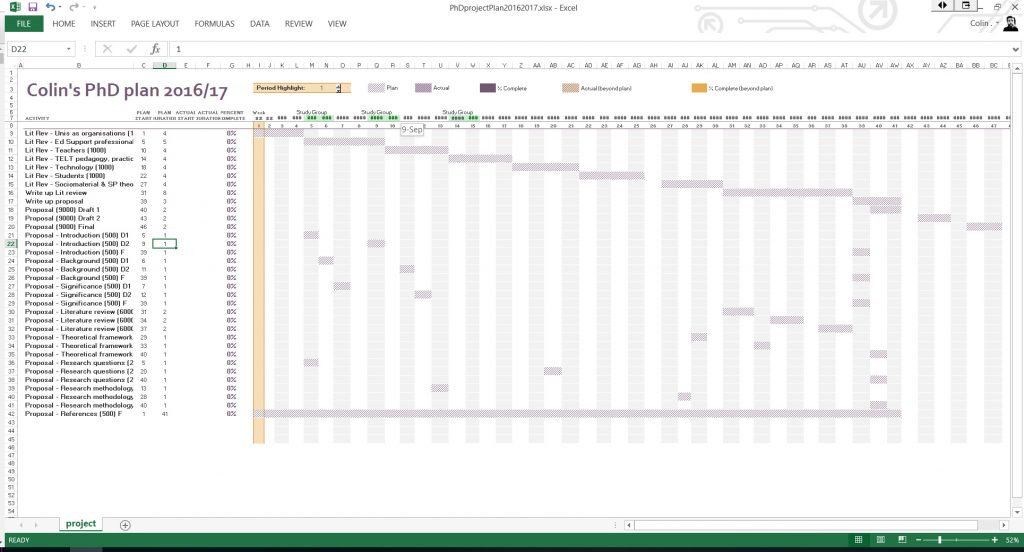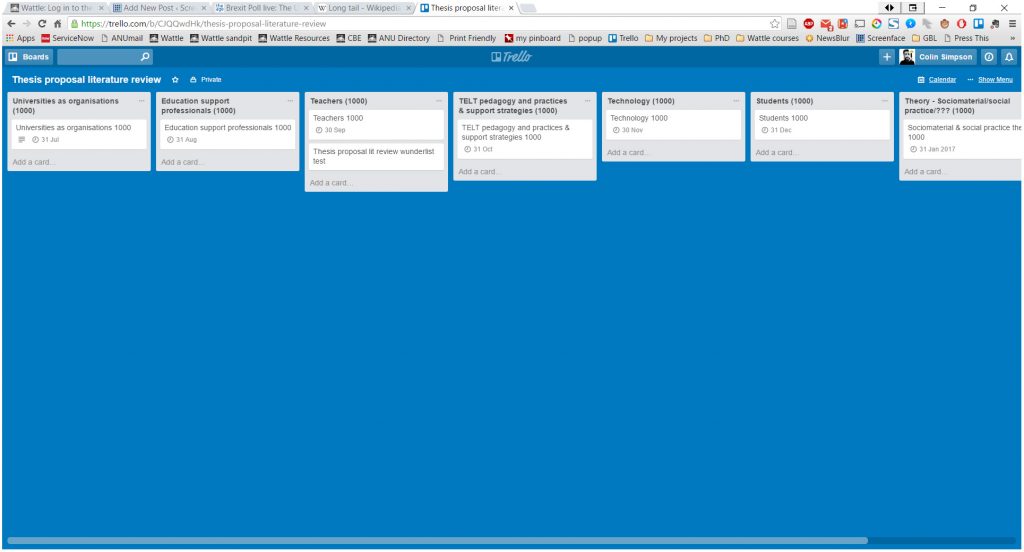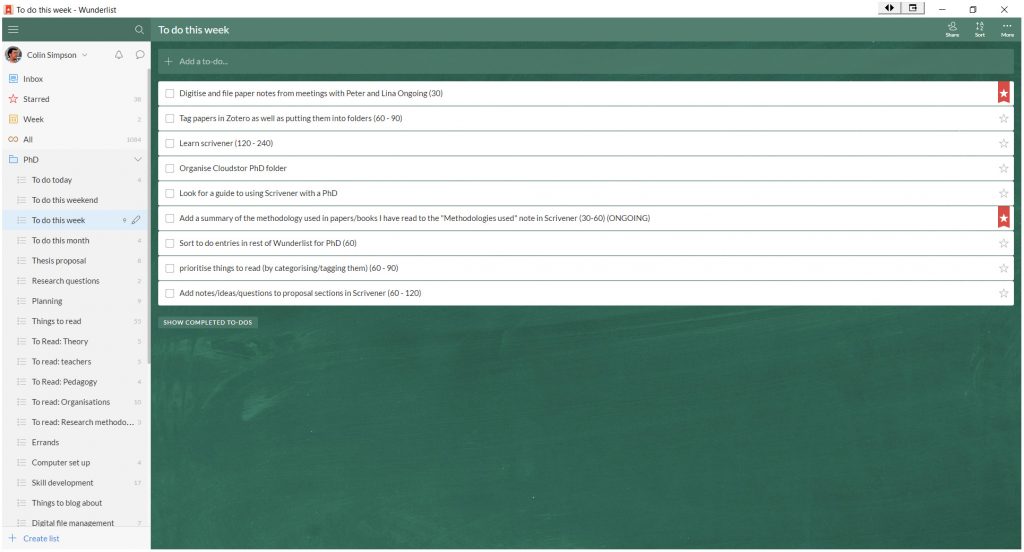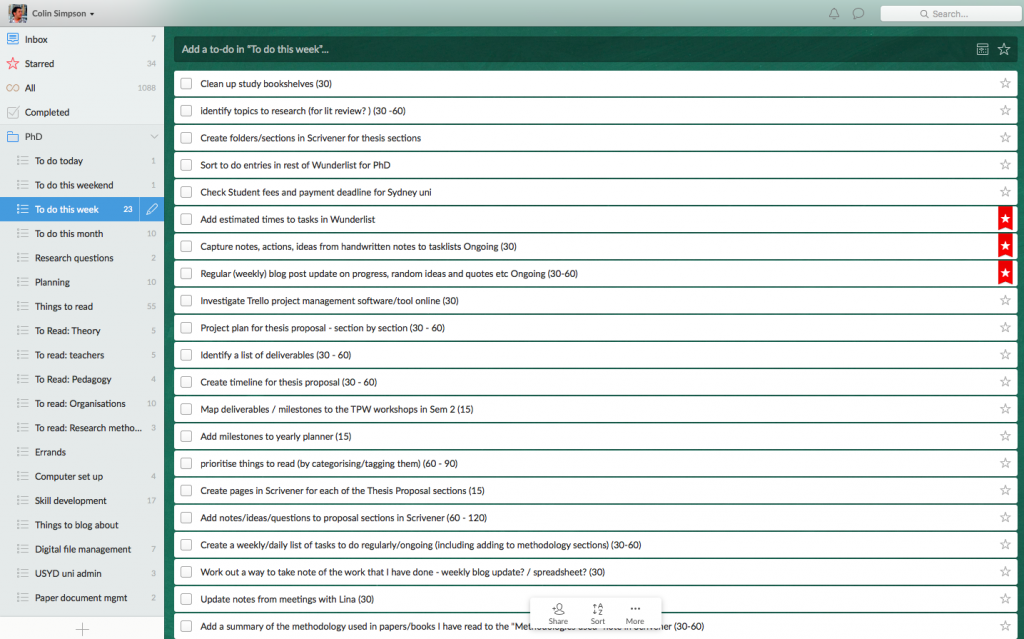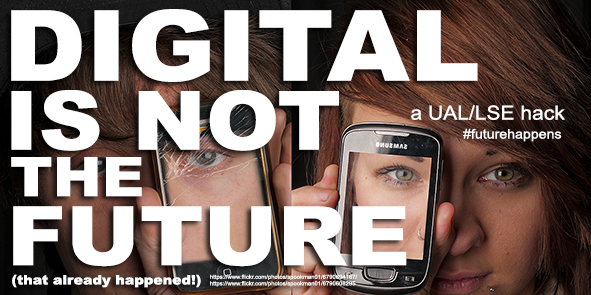As I’ve been investigating Education Support People as a theme in my lit review reading and writing this month, I came across a wealth of interesting papers by Dr Dale Holt at Deakin University. (Australia)
This one, Changing perspectives: teaching and learning centres’ strategic contributions to academic development in higher education, that he co-wrote with Stuart Palmer and Di Challis in 2011 seemed particularly relevant. (And it actually flows on very nicely from my last blog post here too)
The paper offers a rich overview of the recent history and current standing of teaching and learning centres in Higher Education institutions and draws a list of ten very practical “leverage points” that these centres can use to have a greater impact on improving teaching and learning practices. It draws from interviews, surveys and focus groups conducted with leaders in centres at almost all Australian universities as part of research supported by the (former) Australian Learning and Teaching Council.
In terms of a ‘state of the actual’ birds-eye overview, this paper is a useful resource and most of the recommendations make a lot of sense. I did find a few internal inconsistencies in the ways that ‘conventional wisdom’ (e.g. the value and effectiveness of large Communities of Practice in Higher Ed) directly contradicted the lived experiences of the study participants (e.g many academics don’t often engage with people outside their discipline). In fairness, these weren’t ignored but I would’ve liked to see deeper discussion here.
The paper doesn’t explicitly define ‘learning and teaching centres’, assuming a degree of prior organisational knowledge. There is a reference to “the associated complexity of academic development work” (p.5) in the introduction and a table comparing “traditional and new centre paradigms” (p.8) also refers to the provision of professional development, engagement with the university executive and “active representation on faculty teaching and learning committees” (p.8). The assumption that these units operate centrally largely avoids discussion of parallel faculty/college based learning and teaching units and the relationships between the central and ‘outer’ teams. The fact that many colleges/faculties see a need for local, specialised teams is an interesting issue worthy of further exploration. All this said however, I can appreciate the need to manage the scope of this research and focusing on the central units makes sense.
One of the most interesting aspects of this paper came almost in passing and wasn’t really mentioned again. It was a conclusion drawn from previous research by the authors about measures of success in these kinds of units.
It emerged that a myriad of factors influenced whether or not a centre was recognised as being an integral and valued part of its university’s teaching and learning community – a hallmark of having reached maturity. However four factors were identified as being critical to the ability of centres to succeed: clarity of role and direction; shared understanding of purpose; the capacity and capability to achieve purpose; and the ability to demonstrate value (Challis, Holt & Palmer, 2009) (p.6)
Arguably, it’s possible to map these factors to the listed ‘leverage points’ that form the bulk of the paper but it isn’t done explicitly, which seems like a missed opportunity to construct a more powerful resource for people working in these centres. (Though, I’ll admit, that’s not necessarily the point of the paper).
Just as I have found so far in my own research, this paper identifies that the flip side of the ‘how can Higher Ed / T&L centres succeed in supporting better teaching and learning’ coin is the equally important question, ‘what are the obstacles/barriers to success that must be overcome?’
Drawing again from prior research, the authors found that
The principal constraints identified were ‘lack of staff time’, both in the faculties and in the centre, to engage in teaching and learning improvement activities, followed by incorrect or outdated general perceptions of the role and function of the centre and insufficient resources to have a significant impact (Palmer, Holt & Challis, 2010) (p.6)
Drilling down into this paper, it seems to arrive at a philosophical position (supported by some organisational theorists – Senge, 1990 and Mintzberg, 1989) that a network based approach to academic staff professional development is the ultimate goal for moving towards overall improvements. In principal I agree but it would be nice to see some tangible supporting evidence.
At the heart of the argument for networked professional development is Mintzberg’s (1989) classification of universities as “professional bureaucracies”.
Universities, he argues, are hierarchically organised by discipline specialisation. Hence we see universities organised into faculty-based clusters of related disciplines, with a further, more specialised grouping of single disciplines or tightly-related disciplines at the departmental level. Professional learning and development in education is, therefore, vertically driven and governed by discipline concerns. Networking, on the other hand, complements vertical learning through the provision of opportunities for educators and leaders to engage horizontally across departments, faculties and disciplines: not only to engage across areas of interest at a particular level but also to relate through-out various organisational levels and domains. This networked, informal and collegial environment, we argue, provides great potential to enhance teaching and learning throughout the organisation and to contribute to external networking opportunities as well
While I applaud the philosophy of the horizontal approach and would love to see educators learning from their peers in other disciplines, I have to wonder if it is ultimately a matter of expending a lot of energy in pursuit of an ideological goal at the expense of making actual progress. I’ve been considering a competing approach in recent days which is entirely unformed yet but essentially works with the silos and micro-silos to create a series of small communities of practice (say 3-4 people in a specific discipline) that would foster localised cooperation and collaboration and then ideally serve as nodes in a larger network – or constellations in a galaxy of stars. (This second metaphor appears in particular because our new VC is an astro-physicist and the idea of stars offers some nice imagery). I have an acronym that kind of works here too – STELLAR – Scholarship/Scholars of Technology Enhanced Learning, Leadership And Research. But there’s still work to be done on this idea. (I’m also thinking about options to gamify the whole thing – initial responses to this from my colleagues and members of the college executive have been positive)
Holt et al use the notion of ‘leverages’ as an overall roadmap for strategic approaches that teaching and learning centres in universities can take.
Senge (1990, p.15) identifies systems thinking, and the associated notion of leverage, as a key skill for leaders building learning organisations.
“Systems thinking also shows that small, well-focused actions can produce significant enduring improvements, if they are in the right place. Systems thinkers refer to this idea as the principle of ‘leverage’. Tackling a difficult problem is often a matter of seeing where the high leverage lies, where a change – with a minimum of effort – would lead to lasting, significant improvement” (as quoted on p.9 of Holt et al)
Given that Senge wrote this more than a quarter of a century ago, I might check whether systems thinking is still considered ‘a thing’ in the organisational management community but it has a ring of truth to it.
Without going into tremendous detail on all ten leverage points, because this post is already on the long side and most seem like common practice, they are:
- New visions/new plans – support uni vision with scholarship of existing research and collaboration with peer institutions. (Need to be careful of pushing a one-size-fits-all vision though)
- Preparation of new continuing academic staff – induction and training (mindfulness of their discipline context)
- Compulsory casual teaching development program (I’ll assume this is paid work)
- Just in time professional development (The paper emphasises online training and resources, I agree they have value but have found people engage far more with face to face training)
- Communities of practice – “Given that research into and practical applications of CoP have primarily been industry-focused, a new paradigm for CoP in academe called CoP-iA can be argued for (Nagy & Burch, 2009)” (p.12)
- Strategic funding for development – needs to find a balance between “an emphasis on the conservation of resources often associated with quality assurance and risky investments in innovation associated with quality improvement” (P.13)
- Supporting teaching excellence through awards and fellowships – (recognition of individuals vs teams, do individuals truly ‘pay it forward’?)
- Disseminating exemplary practices online
- Recognition and use of education ‘experts’ – (yes but there is a disappointing assumption in this section of the paper that the only education experts are academics – professional third space staff are invisible)
- Renewing leadership – distributed leadership models to use ‘expert educators’ more effectively in decision making bodies\
General random ideas and thoughts this paper has triggered:
As I mentioned earlier, I’ve been thinking a bit about CoPs recently and why we struggle to get buy in. Time is certainly one factor but I’ve increasingly been thinking that, while it is desirable, pushing broad cross-disciplinary collaboration because ‘it’s good for you’ may be too great a cultural change in the first instance. This paper has helped me to clarify some of my thoughts around this and I’m going to explore this node/constellation model a little further.
Awards and fellowships and other extrinsic motivators for outstanding teaching is another thing that I’ve been considering and plan to dig down into. While providing recognition for individual excellence appear to be an entrenched part of Higher Education culture, I have to wonder how much the recipients pay it forward and whether a focus on rewarding team/department level improvements in teaching and learning practices/outcomes might be more effective. (But again, this may be a matter of calling for too great a cultural shift).
If we are to stick with the model of rewarding individual achievements, are there ways that we can move the application process for awards/fellowships/etc from an isolated, short time-frame based approach to something that happens more publicly over a greater period of time. I’m not sure how but perhaps it could involve keeping a reflective journal or blog in some way and have a greater focus on contributions to the scholarship of teaching and learning.
This paper ends by touching on the notion of teaching and learning centres as a hub, or pivotal node in the T&L activities of a university. I’ve been thinking along similar lines about Education Support People (both academic and professional) and the valuable space that they inhabit – linked to teachers, students, IT teams, policy and other support areas as well as the wider educational support and scholarly community. So, that seems like a good thing 🙂

